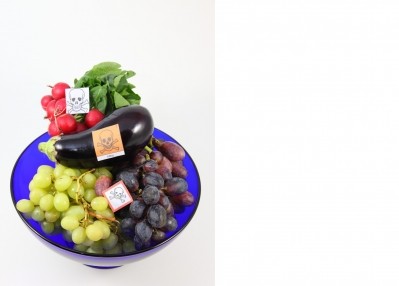Part 1 of 6: Thermo Fisher Scientific series
Why versatility is vital for pesticide quantitation and screening workflows

These maximum residue levels (MRLs) apply to more than 300 fresh products and any processed foods in which they are included (1).
Ensuring the food we eat complies with these legal requirements is one of the most important roles of the food safety laboratory. So, regardless of whether a lab is performing routine quantitation or non-targeted screening for new analytes, its pesticide workflows must be fit for purpose.
However, with such a wide variety of compounds and matrices to analyze, it can take time and resources to optimize a particular method from start to finish.
Thankfully, the latest approaches for sample preparation, analyte detection and data analysis are versatile, robust and can be quickly configured to study a wide range of analyte–matrix combinations.
Sample preparation
The first step in any pesticide workflow involves extracting the contaminants from the food sample for analysis. Traditional preparation techniques could be costly, time-consuming and required large amounts of solvent. Many approaches were also dependent on sample matrix.
The QuEChERS (Quick, Easy, Cheap, Effective, Rugged, and Safe) approach was developed to overcome these limitations.
QuEChERS consists of a series of straightforward steps that homogenize samples and remove common matrix components such as fatty acids and sugars. Its high recoveries, versatility and ease-of-use mean it is fast becoming the preparation method of choice for high-moisture food samples.
Analyte detection
For analyte detection, the two main LC-MS technologies employed are based on triple quadrupole mass spectrometry (QqQ) or high resolution accurate mass (HRAM).
LC-QqQ-MS forms the mainstay of targeted quantitation workflows in many pesticide testing laboratories. Its high sensitivity and selectivity allows analysts to confidently identify and quantify even trace levels of contaminants, whilst its reliability and robustness means it is able to perform routine, high-throughput analysis cost effectively.
Advances in LC-HRAM technology are allowing a growing number of food safety labs to perform non-targeted screening as well as routine quantitation. Its exceptional mass resolution and ability to analyze multiple analytes simultaneously allow labs to investigate molecules of interest not on routine testing lists, as well as retrospective analysis and potential quantitation of all compounds present.
Data analysis
Regardless of whether a laboratory applies QqQ or HRAM methods for quantitation or more advanced non-targeted screening, robust software is essential to manage these workflows. This technology is required for method development and data acquisition, as well as analysis, review and report generation.
For many high-throughput food safety labs with demanding workflow schedules, it’s essential that this software is reliable, easy to use and can process data in a reasonable amount of time.
To overcome this challenge, the most up-to-date laboratories are using integrated method development and data analysis that allow analysts to edit pre-configured methods depending on the matrix or analytes of interest. These start-to-finish workflows allow labs to quickly adapt methods to study a wide range of samples.
For screening applications, data analysis software that can search against large HRAM spectral libraries can help analysts quickly identify compounds of interest. These libraries are regularly updated, ensuring food safety labs are up to date with the latest data.
These all-in-one software solutions, along with universal preparation techniques and robust instrumentation, are helping food safety labs quickly and easily configure pesticide workflows – ensuring the food on our plates is as safe as possible.
(1) Regulation (EC) No 396/2005 of the European Parliament and of the Council of 23 February 2005.
- Dr Debadeep Bhattacharyya, senior manager of product marketing (Triple Quadrupole Mass Spectrometry), for all business in the applied market division at Thermo Fisher Scientific Inc.


























